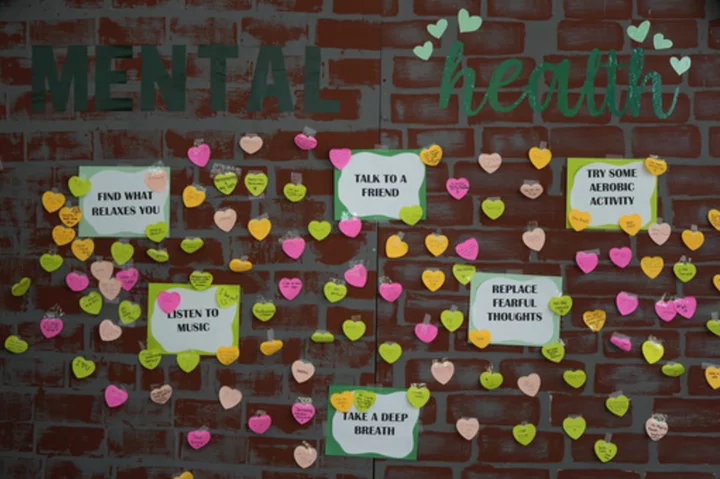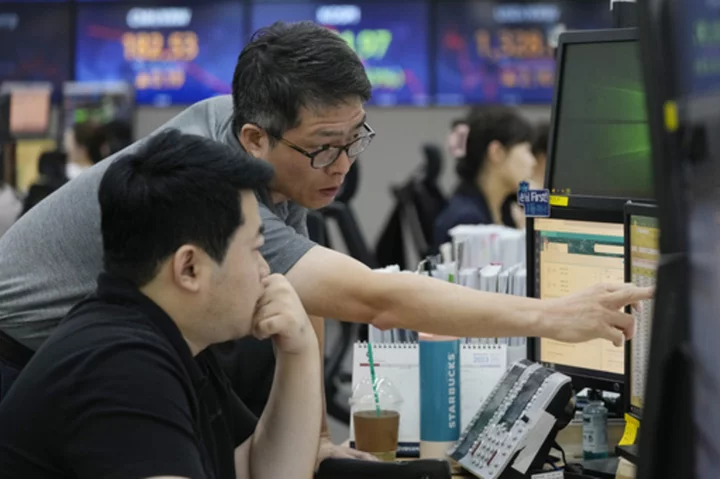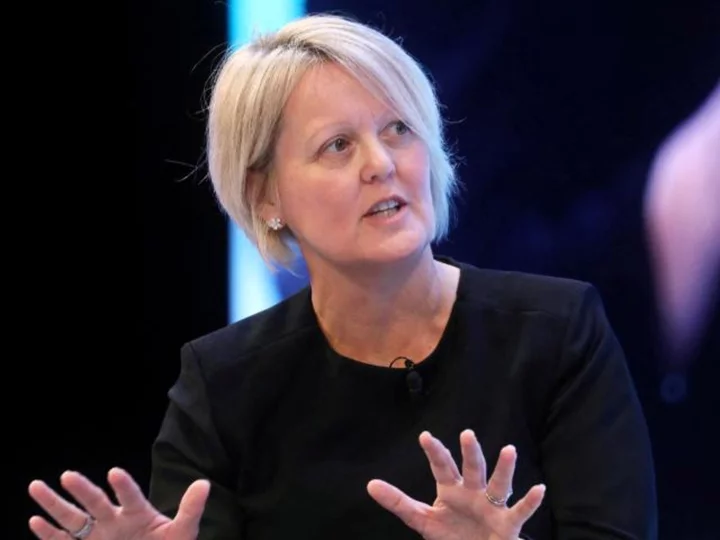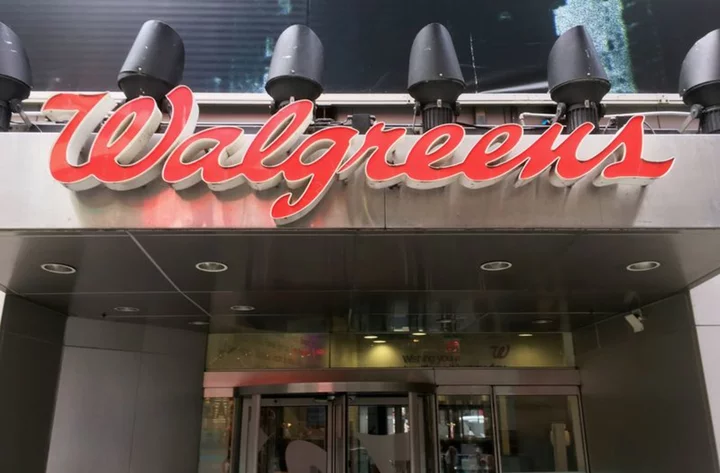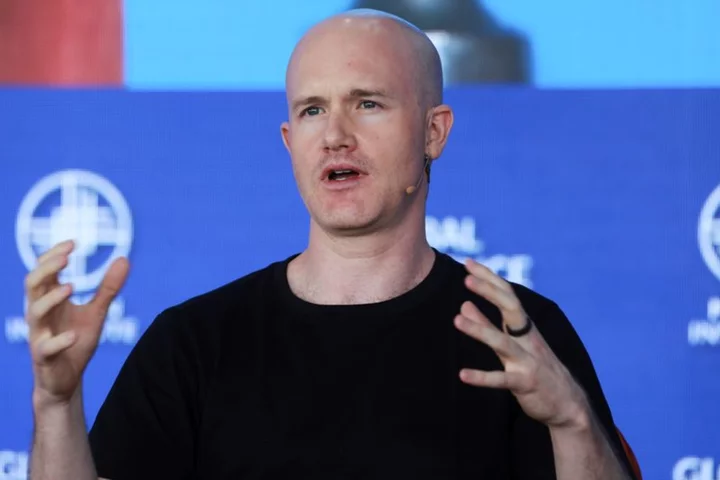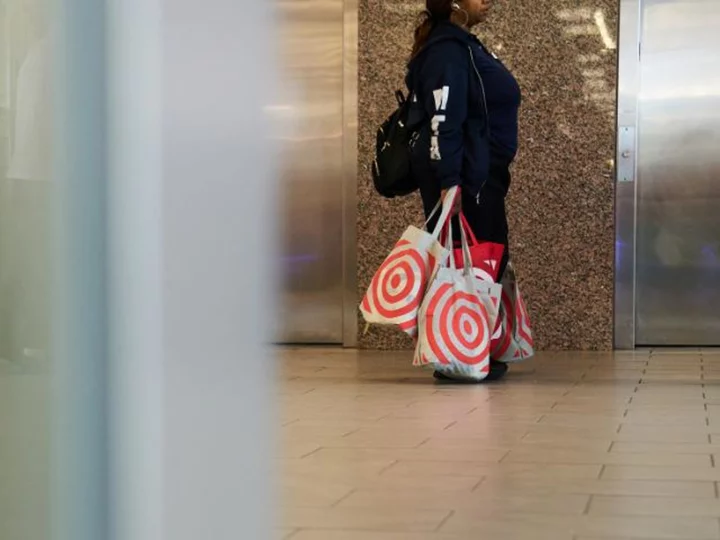Trouble with playground bullies started for Maria Ishoo’s daughter in elementary school. Girls ganged up, calling her “fat” and “ugly.” Boys tripped and pushed her. The California mother watched her typically bubbly second-grader retreat into her bedroom and spend afternoons curled up in bed.
For Valerie Aguirre’s daughter in Hawaii, a spate of middle school “friend drama” escalated into violence and online bullying that left the 12-year-old feeling disconnected and lonely.
Both children received help through telehealth therapy, a service that schools around the country are offering in response to soaring mental health struggles among American youth.
Now at least 16 of the 20 largest U.S. public school districts are offering online therapy sessions to reach millions of students, according to an analysis by The Associated Press. In those districts alone, schools have signed provider contracts worth more than $70 million.
The growth reflects a booming new business born from America’s youth mental health crisis, which has proven so lucrative that venture capitalists are funding a new crop of school teletherapy companies. Some experts raise concerns about the quality of care offered by fast-growing tech companies.
As schools cope with shortages of in-person practitioners, however, educators say teletherapy works for many kids, and it’s meeting a massive need. For rural schools and lower-income students in particular, it has made therapy easier to access. Schools let students connect with online counselors during the school day or after hours from home.
“This is how we can prevent people from falling through the cracks,” said Ishoo, a mother of two in Lancaster, California.
Ishoo recalls standing at her second-grader's bedroom door last year and wishing she could get through to her. “What’s wrong?” the mother would ask. The response made her heart heavy: “It’s NOTHING, Mom.”
Last spring, her school district launched a teletherapy program and she signed up her daughter. During a month of weekly sessions, the girl logged in from her bedroom and opened up to a therapist who gave her coping tools and breathing techniques to reduce anxiety. The therapist told her daughter: You are in charge of your own emotions. Don’t give anyone else that control.
“She learned that it’s OK to ask for help, and sometimes everyone needs some extra help,” Ishoo said.
The 13,000-student school system, like so many others, has counselors and psychologists on staff, but not enough to meet the need, said Trish Wilson, the Lancaster district’s coordinator of counselors.
Therapists in the area have full caseloads, making it impossible to refer students for immediate care, she said. But students can schedule a virtual session within days.
“Our preference is to provide our students in-person therapy. Obviously, that’s not always possible,” said Wilson, whose district has referred more than 325 students to over 800 sessions since launching the online therapy program.
Students and their parents said in interviews they turned to teletherapy after struggling with feelings of sadness, loneliness, academic stress and anxiety. For many, the transition back to in-person school after distance learning was traumatic. Friendships had fractured, social skills deteriorated and tempers flared more easily.
Schools are footing the bill, many of them using federal pandemic relief money as experts have warned of alarming rates of youth depression, anxiety and suicide. Many school districts are signing contracts with private companies. Others are working with local health care providers, nonprofits or state programs.
Mental health experts welcome the extra support but caution about potential pitfalls. For one, it’s getting harder to hire school counselors and psychologists, and competition with telehealth providers isn't helping.
“We have 44 counselor vacancies, and telehealth definitely impacts our ability to fill them,” said Doreen Hogans, supervisor of school counseling in Prince George’s County, Maryland. Hogans estimates 20% of school counselors who left have taken teletherapy jobs, which offer more flexible hours.
The rapid growth of the companies raises questions about the qualifications of the therapists, their experience with children and privacy protocols, said Kevin Dahill-Fuchel, executive director of Counseling in Schools, a nonprofit that helps schools bolster traditional, in-person mental health services.
“As we give these young people access to telehealth, I want to hear how all these other bases are covered,” he said.
One of the biggest providers, San Francisco-based Hazel Health, started with telemedicine health services in schools in 2016 and expanded to mental health in May 2021, CEO Josh Golomb said. It now employs more than 300 clinicians providing teletherapy in over 150 school districts in 15 states.
The rapid expansions mean millions of dollars in revenue for Hazel. This year, the company signed a $24 million contract with Los Angeles County to offer teletherapy services to 1.3 million students for two years.
Other clients include Hawaii, which is paying Hazel nearly $4 million over three years to work with its public schools, and Clark County schools in the Las Vegas area, which have allocated $3.25 million for Hazel-provided teletherapy. The districts of Miami-Dade, Prince George’s and Houston schools also have partnered with Hazel.
Despite the giant contracts, Golomb said Hazel is focused on ensuring child welfare outweighs the bottom line.
“We have the ethos of a nonprofit company but we’re using a private-sector mechanism to reach as many kids as we can,” Golomb said. Hazel raised $51.5 million in venture capital funding in 2022 that fueled its expansion. “Do we have any concerns about any compromise in quality? The resounding answer is no.”
Other providers are getting into the space. In November, New York City launched a free telehealth therapy service for teens to help eliminate barriers to access, said Ashwin Vasan, the city's health commissioner. New York is paying the startup TalkSpace $26 million over three years for a service allowing teens aged 13 to 17 to download an app and connect with licensed therapists by phone, video or text.
Unlike other cities, New York is offering the service to all teens, whether enrolled in private, public or home schools, or not in school at all.
“I truly hope this normalizes and democratizes access to mental health care for our young people,” Vasan said.
Many of Hawaii’s referrals come from schools in rural or remote areas. Student clients have increased sharply in Maui since the deadly August wildfires, said Fern Yoshida, who oversees teletherapy for the state education department. So far this fall, students have logged 2,047 teletherapy visits, a three-fold increase from the same period last year.
One of them was Valerie Aguirre's daughter, whose fallout with two friends turned physical last year in sixth grade, when one of the girls slapped her daughter in the face. Aguirre suggested her daughter try teletherapy. After two months of online therapy, “she felt better,” Aguirre said, with a realization that everyone makes mistakes and friendships can be mended.
In California, Ishoo says her daughter, now in third grade, is relaying wisdom to her sister, who started kindergarten this year.
“She walks her little sister to class and tells her everything will be OK. She’s a different person. She’s older and wiser. She reassures her sister,” Ishoo said. “I heard her say, ‘If kids are being mean to you, just ignore them.’”
___
Associated Press data reporter Sharon Lurye contributed.
___
The Associated Press education team receives support from the Carnegie Corporation of New York. The AP is solely responsible for all content.

